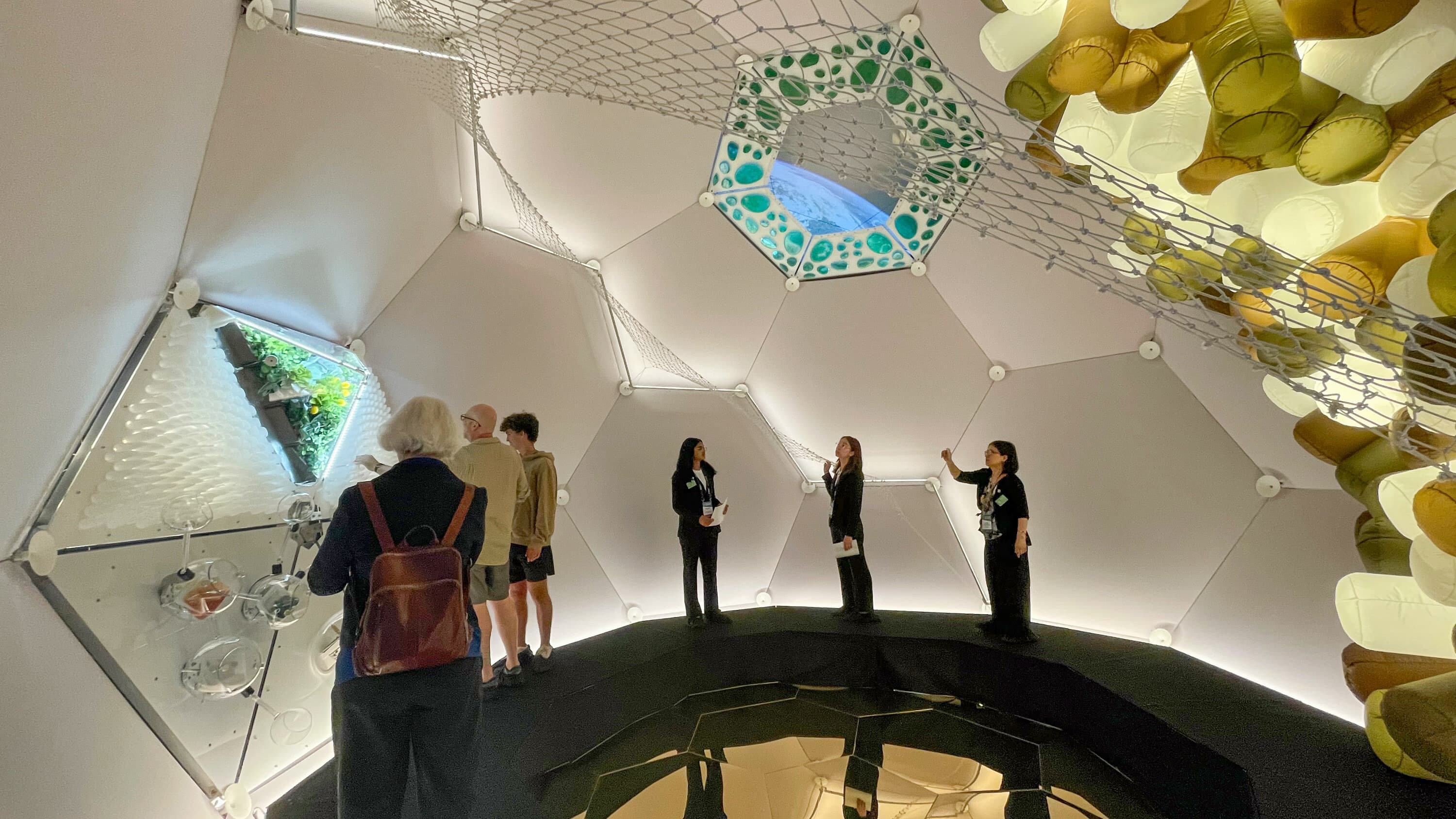
This self-constructing habitat previews your home in space
What's the story
The Aurelia Institute, a non-profit space architecture lab based in Cambridge, Massachusetts, has unveiled an innovative concept for a space habitat named TESSERAE. This unique design is capable of self-assembly in orbit. The project aims to overcome the current challenges associated with constructing large space habitats that typically necessitate multiple rocket launches and risky human assembly in space.
Design details
TESSERAE's design: A safer alternative to human assembly
The TESSERAE habitat is designed using compact stacks of flat tiles that can be launched into space and self-assemble into a habitat. To prevent them from drifting apart, the tiles are held together by a net or balloon-like structure. Each tile is fitted with strong magnets that enable them to snap together in the correct configuration. This design eliminates the need for humans to risk their lives in space suits during assembly, as stated by Aurelia's CEO Ariel Ekblaw.
Assembly process
TESSERAE's compact design and error detection
The compactness of TESSERAE's design has been likened to a flat-packed IKEA box by Stephanie Sjoblom, Aurelia Institute's vice president of strategy and business development. If the tiles fail to assemble correctly, sensors and magnetometers identify the error. A current is then pulsed through the magnets to disassemble and reattempt assembly. This feature ensures accuracy in the self-assembly process of the space habitat.
Testing phases
TESSERAE's successful tests and future plans
The Aurelia Institute has successfully tested smaller, hand-sized tiles in space on several occasions. One such test was conducted during Axiom Space's Ax-1 mission to the International Space Station (ISS) in 2022. However, a full-scale model of TESSERAE has not yet been constructed in space. Ekblaw suggested that this endeavor might require collaboration with an organization like NASA or Axiom and could potentially be realized by the 2030s.
Financial support
TESSERAE's funding and design features
The TESSERAE project has received financial support from various sources including NASA grants, corporate sponsorships, and philanthropic donors. The exact amount of funds raised or spent by Aurelia has not been disclosed. The design of the habitat is intended to be functional, comfortable, and enjoyable for occupants. It includes unique features like an inflatable sea anemone-like couch inspired by conversations with astronauts.
Technical hurdles
Challenges and potential solutions for TESSERAE
Scaling up the technology for TESSERAE presents certain challenges. Aerospace engineer Oliver Jia-Richards questioned whether the combination of magnets and sensors would be sufficient for larger tiles to self-assemble, suggesting that a propulsion system might be necessary. Additionally, the current tile structures are not airtight and therefore not ready for human habitation. Ekblaw proposed potential solutions such as adding latches to the tiles or inflating an airtight balloon within the structure.